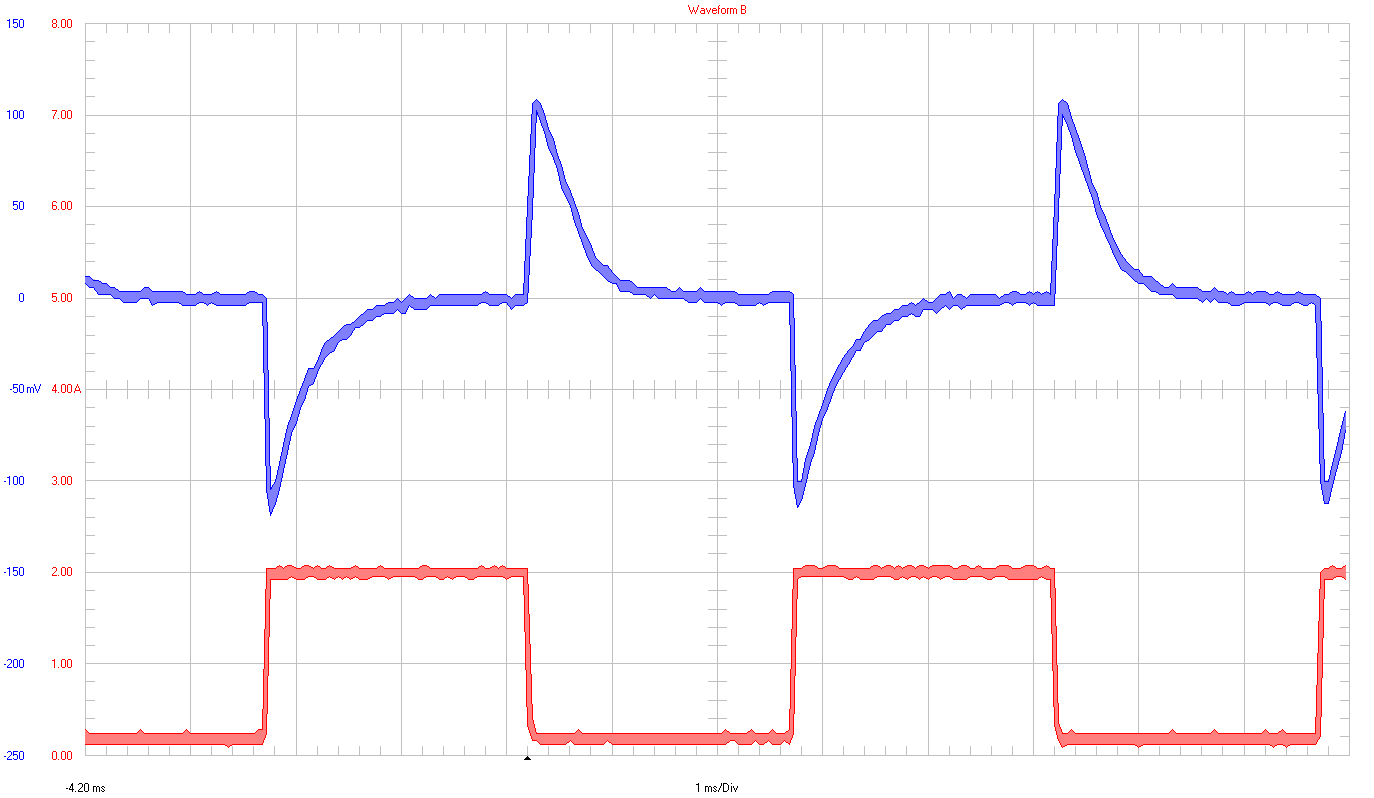TIDT286 June 2022
3.4.2.1 50% Duty Cycle
In Figure 3-9, the output voltage waveform has a deviation of about 1% with bandwidth setting of 10 kHz.

|
Ch1 ⇒ VOUT 50 mV / div (AC) 10-kHz bandwidth Ch2 ⇒ IOUT 1 A / div 20-MHz bandwidth 1 ms / div |
Figure 3-9 Load Transient 0.2 A to 2 A
(50% Duty Cycle)